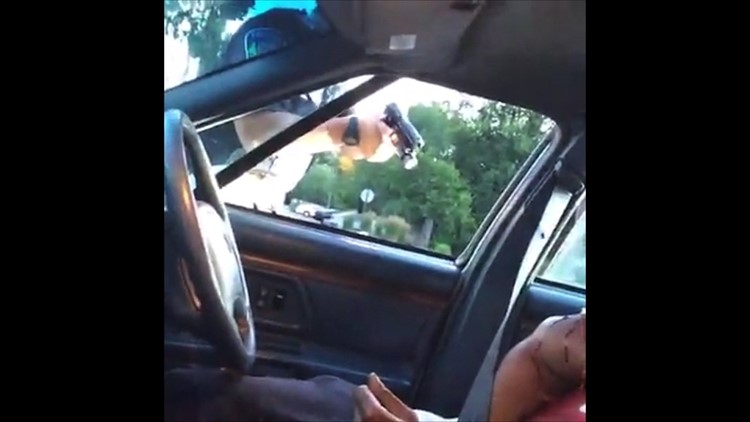FALCON HEIGHTS, Minnesota — Days after police shot Philando Castile and Alton Sterling, the investigations into their deaths are far from over.
But new details are emerging in the two cases that have sparked protests nationwide and debate over whether officers used excessive force.
Here’s a look at the latest developments:
Police chief: Governor’s claim ‘hurt me’
What happened after the video that showed Castile bleeding inside a car went black?
Rick Mathwig says recent reports don’t line up with reality. Mathwig is the police chief in Roseville, Minnesota. His officers weren’t the ones who pulled over Castile or fired the fatal gunshots. But they responded to the scene in Falcon Heights after the shooting. And in an interview with CNN, Mathwig made several points:
• Officers started administering CPR three minutes after arriving at the scene, trying to save Castile’s life, Mathwig says. “It hurt me … to hear the governor of Minnesota saying that Mr. Castile did not receive CPR,” he says.
• Diamond Reynolds, Castile’s fiancée who recorded the shooting aftermath in a Facebook Live video, wasn’t detained by police all night, Mathwig says. The police chief says she was held for about two hours in what’s called a “soft interview room” because it also contains toys, books and blankets.
• Mathwig says investigators did what they could to help Reynolds and her 4-year-old daughter. Before dropping her off at home, Mathwig says an officer gave the child a teddy bear.
Judge Glenda Hatchett, an attorney for the Castile family, told CNN on Wednesday that the investigation into what happened leading up to the shooting — and afterward — is just beginning.
“Was there a delay? There’s a question about whether he was taken to the closest trauma center,” she said. “There are a lot of unanswered questions.”
Racial profiling?
As the investigation continues, details are emerging about Castile’s past encounters with police. Since 2002, law enforcement in Minnesota had pulled over the school cafeteria supervisor at least 52 times, according to state court records. He was charged with a number of offenses, including driving without proof of insurance, but many of the cases against him were dismissed.
Castile was pulled over an average of more than three times a year — something that protesters argue is a sign of racial profiling.
One profiling expert told CNN he agreed.
“I would say that, looking at the record, it’s consistent with a pattern of being racially profiled,” says Myron Orfield, a professor of civil rights and civil liberties law at the University of Minnesota.
“He’s got an awful lot of stops,” Orfield says. “It suggests a pattern of very excessive policing.”
An attorney for the officer who shot Castile says the shooting had nothing to do with race and everything to do with a gun being present at the scene.
Family releases carry permit documentation
Castile had a carry permit for the handgun that was with him at the time of the shooting, according to a document his family provided to CNN.
A letter that accompanied the permit, dated June 4, 2015, and issued by the Hennepin County Sheriff’s Office, includes guidelines about the document.
“You must display the permit card and identification document upon lawful demand by a peace officer,” the letter says.
In her video of the aftermath of the shooting, Reynolds said Castile was reaching for his identification when an officer shot him.
The sheriff’s office told CNN last week that it couldn’t confirm or deny whether Castile — or anyone else — has a permit to carry a firearm.
“It is private data under state law,” sheriff’s spokesman Jon Collins said.
Sterling’s son: Protests should be peaceful
Sterling’s 15-year-old son, Cameron, is calling for calm.
“Everyone needs to protest in the right way — with peace, not violence,” he said Wednesday. “No violence whatsoever.”
Standing outside the Baton Rouge, Louisiana, convenience store where his father was shot dead, the teen said the shooting should unite people, not divide them.
“Everyone needs to be on one chord, not a different note. Everyone needs to be together, not apart,” he said. “And I truly feel that my father was a good man, and he will always be a good man.”
Attorney: Video ‘all that matters’
Attorney L. Chris Stewart, who represents Sterling’s family, told reporters Wednesday that “all that matters is that videotape.”
Video of the shooting shows an officer pulling Sterling over the hood of a car in a convenience store parking lot, then pinning him to the ground.
Someone shouts, “He’s got a gun.” Then seconds later, an officer opens fire.
The U.S. Department of Justice is leading a criminal investigation into the case. Authorities have been tight-lipped about what happened as the inquiry continues.
But in a search warrant affidavit, a Baton Rouge detective provided a police account of what unfolded that night.
Detective R. Cook wrote that police who shot Sterling did so after seeing him reach for a gun.
Baton Rouge officers deployed their Tasers after Sterling did not comply with their orders, Cook said.
“While the officers were attempting to subdue the subject, the officers observed the butt of a gun in the subject’s front pants pocket,” Cook wrote.
“When the subject attempted to reach for the gun from his pockets the officers fired their police issued duty weapon at the subject to stop the threat. The subject was shot multiple times and did not survive his injuries.”
Stewart told reporters Wednesday the officers didn’t follow protocol.
“We’re not saying they were trying to look for someone to kill. I’m saying they didn’t follow proper procedure, and that they took it out of hand,” he said. “The only thing you need to be judging is what you saw on that videotape.”



